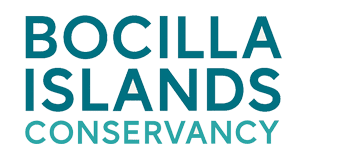Bocilla Islands Conservancy Position Paper on Red Tide
As part of its mission, The Bocilla Islands Conservancy, Inc. (“BICI”) is dedicated to the preservation and protection of the unique natural resources and the quality of life for those who live on the ecosystem of Palm, Knight, Little Gasparilla, and Don Pedro Islands and Thornton Key. This means providing protection for native plant and animal life, educating those who visit, live, or work on and around the barrier islands, and positing reasonable and desirable priorities for individuals and private and governmental organizations that initiate or sustain policies or practices necessary to improve and conserve our ecosystem. One issue of primary importance is identification of threats to animals and aquatic species, plant life, and people who inhabit the islands and the waters that surround them. One such threat is red tide.
The following is the official BICI position on Red Tide.
-
A red tide is a harmful algal bloom consisting of an above-normal concentration of a microscopic alga or plant-like organism. In Southwest Florida and the Gulf of Mexico, Karenia brevis (“K. brevis”) is the species that causes most red tides. To distinguish K. brevis blooms from red tides caused by other species of algae, researchers in Florida call it “Florida red tide.”¹
-
Toxic chemicals produced by red tides harm marine organisms and humans. K. brevis produces brevetoxins affecting the central nervous system of fish and other vertebrates, resulting in death. Wave action breaks open K. brevis cells, releasing brevetoxins into the air, leading to respiratory irritation. People with severe or chronic respiratory conditions may sustain serious illness from red tide. Mote Marine Laboratory studies show that “airborne red tide toxins can travel up to a mile inland, depending on the wind direction and other weather patterns,” affecting people and animals up to a few blocks away from the beach.² Brevetoxins can also accumulate in oysters and clams, which can lead to Neurotoxic Shellfish Poisoning in people who consume contaminated shellfish.³
-
The impacts of red tide have caused massive fish kills along miles of beach and impacted inshore waters and estuaries. In Southwest Florida, the impact hits some of the most important and fragile mangrove estuary systems. Human engineering of canals and waterways along the Gulf and the Intracoastal Waterway regrettably harbor massive amounts of dead fish, making them impossible to remove by natural flows and manmade cleanups in the inshore waters. The dead fish are a health hazard to humans, pets, and native animal species because dead fish sustain and nourish harmful bacteria.⁴
-
Red tide can create economic as well as quality of life and health issues of massive proportions. In an economy so dependent upon tourism, and especially outdoor sport, beach and inland water, and eco-tourism, red tide onslaughts and sustained or repeated red tide impacts threaten the economy of the region, land values, and overall quality of life on beach communities and especially the barrier islands in Southwest Florida. This, in turn, threatens the ability of BICI and other conservation organizations to maintain support for efforts to sustain the natural ecosystem.
-
While there is no direct link between nutrient pollution and the frequency or severity of red tides caused by K. brevis, once red tides are transported inshore, they are capable of using man-made nutrients for their growth.⁵ Runoff from storm water and releases from Lake Okeechobee combined with the addition of fertilizer, human waste, and other pollutants into the waters and runoff that makes its way to the Gulf exacerbate K. brevis by increasing its growth and also magnify its impact by additionally stressing aquatic species and those that interact with them in the ecosystem, such as plants, animals, birds, and humans. It follows that stressed aquatic species die sooner and in greater numbers if they are subjected to multiple stressors and invigorated or sustained red tide.
-
Red tide has been around as long as records have been kept about Southwest Florida, and there are no known scientifically acceptable means for controlling K. brevis.⁶ Finding solutions to the exacerbating influences of development and political decisions concerning water management in Florida will not be easy. However, the alternative of doing nothing is not a reasonable path for responsible local, state, and federal leaders.
In light of the dangers and undesirable effects of red tide and the exacerbating influences of releases from inland impoundments, storm runoff, fertilizer, human waste, and other factors known and unknown to the scientific community upon our waters—and in light of the fragile nature of our barrier island ecosystem—BICI urges the systematic study of the causes and potential solutions to these issues immediately and in a sustained fashion until mitigating efforts can be identified, prioritized, and implemented by state and federal governing bodies and agencies, private organizations, and the general public.
August ___, 2018
By Action of the Board of Directors, Bocilla Islands Conservancy, Inc.

